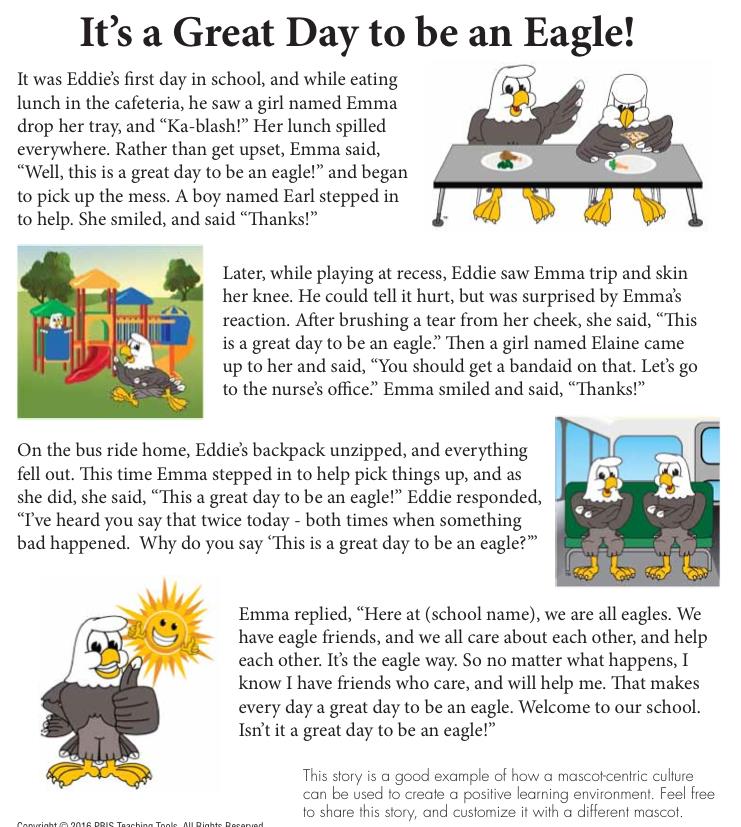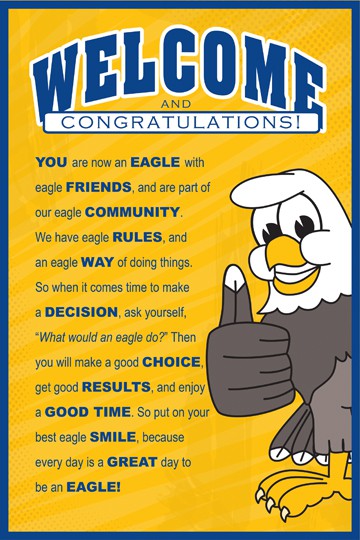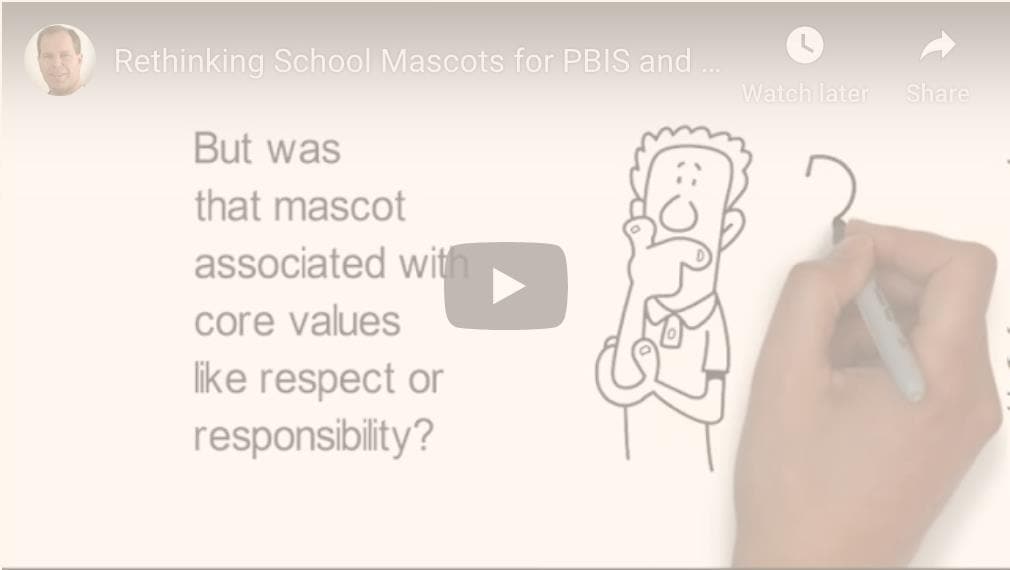Mascot-centric school cultures
Beyond the obvious benefits of having a mascot-centric school culture (fun and engaging), there are compelling psychological and scientific reasons why a mascot is a very powerful teaching tool. Here we explore how, and why, it works so well so you can leverage its power more effectively.
Henry Ford once famously said, "Whether you think you can, or cannot, you are right." He was referring to what one believes about themself - their self-image. It's human nature to act consistently with one's self-image - good or bad. It's like a person's auto-pilot system, buried deep in the self conscious mind. It's a complex amalgamation of life experiences, observations, and input from parents, siblings, friends, teachers, mentors, and to some extent, anyone, or anything they encounter. A parent that tells their child is stupid or lazy is like pushing a poison pill down their throat, and is likely to create a toxic self-image that can haunt the child for life. With great power, comes great responsibility, and unfortunately, there are a lot of people who unwittingly wreak damage on young minds with careless use of words.
You can try help foster a positive self-image in a child by using affirmative language, but a mascot gives you magical back door into a child's self-image that is much more effective. Here's how it works. The instant a child utters the words, "I am a tiger," they are adopting the tiger as part of their self-image. Unlike other parts of their self-image, the tiger is very easy to understand. It's visual, and it comes with whatever set of behavioral expectations you set for it. When the child understands that tigers are respectful, responsible and safe, then by association, they are too. Control the tiger, and you control the child. You actually control very valuable real estate in the child's mind - a portion of their self-image that they have a strong emotional tie to.
Let's examine the strong emotional tie they have to being a tiger. The emotional incentives for enjoying social success within the group, that a person self-identifies with, is hard-wired. We all want to have friends; and if you are a tiger, you want tiger friends. We all want to be accepted, included and liked.
This huge emotional incentive hangs in the air every day at school. The tiger gives you a literary device for creating a roadmap for enjoying social success that children readily embrace, and easily understand. They embrace it because they are a tiger. They understand it because it's very visual.
Visual examples of the mascot demonstrating what positive behaviors look like, in different areas of the school, are critical, especially for younger children that don't read, or read well. Let's face it, adults don't read like they should either. A picture communicates at a glance. If you want to teach children to wash their hands in the restroom, out of respect, then post a picture of a tiger washing its hands in the restroom.
Sounds simple - yes it is! But now you now WHY it's so effective.
So let's rethink the role of our school mascots. They are no longer the snarling, aggressive, muscled-up symbols of competitive dominance and school spirit. Let's make them the "keeper of the culture," and a shining example of good character.
The following short story illustrates the benefits of using a mascot-centric approach to school climate creation. You'll be glad you took 60 seconds to read it.

This story is a glorious example of how a mascot-centric culture helps students navigate through social situations with greater success.
It means something when you tell a child “Congratulations Suzy, you are now a tiger. You are part of a tiger community and have tiger friends. We have tiger rules and a tiger way of doing things; and every day is a grrreat day to be a tiger! So whenever you make a decision, ask yourself ‘What would a good tiger do?’ and you'll make a good choice, and get good results! So put on your best tiger smile, and have fun! Every day is a grrreat day to be a tiger!”
This is the essence of what we mean by creating a mascot-centric climate for your school. It’s a way of life, a welcoming world full of positive examples. No matter what your mascot is, we can help you build a mascot-centric climate full of positive behavior examples that students whole-heartedly embrace, imitate and use to develop social skills to help them navigate through school, and life, with greater ease and success.
The instant a child utters the words "I am a tiger," something almost magical happens. It is a powerful affirmation that actually molds part of their self-image. They ARE a tiger! And what makes it magical is that it's human nature to act consistently with one's self-image. Even if their mind is full of contrary information and behavioral examples, the gravitational pull is relentless, and that gives educators an excellent opportunity to influence their behavior. Control the tiger, and you control the child. In one sense, by owning the tiger (mascot), you own very valuable real estate in the child's mind - a part of their self-image. The emotional incentives for enjoying success inside the community of tigers is very powerful. Everyone wants to have friends, be liked, and enjoy the benefits of a supportive social circle.
A mascot-centric climate leverages the school mascot as a role model to demonstrate the positive behaviors of your PBIS program. It gives students a framework for understanding the social and behavioral expectations of the community. The framework is visual (tiger), so it's easy to understand, and it's also very enticing and engaging. Quite simply - It works... beautifully!

For PBIS schools - This welcome message refers to rules/expectations and tells students how to make good decisions.

